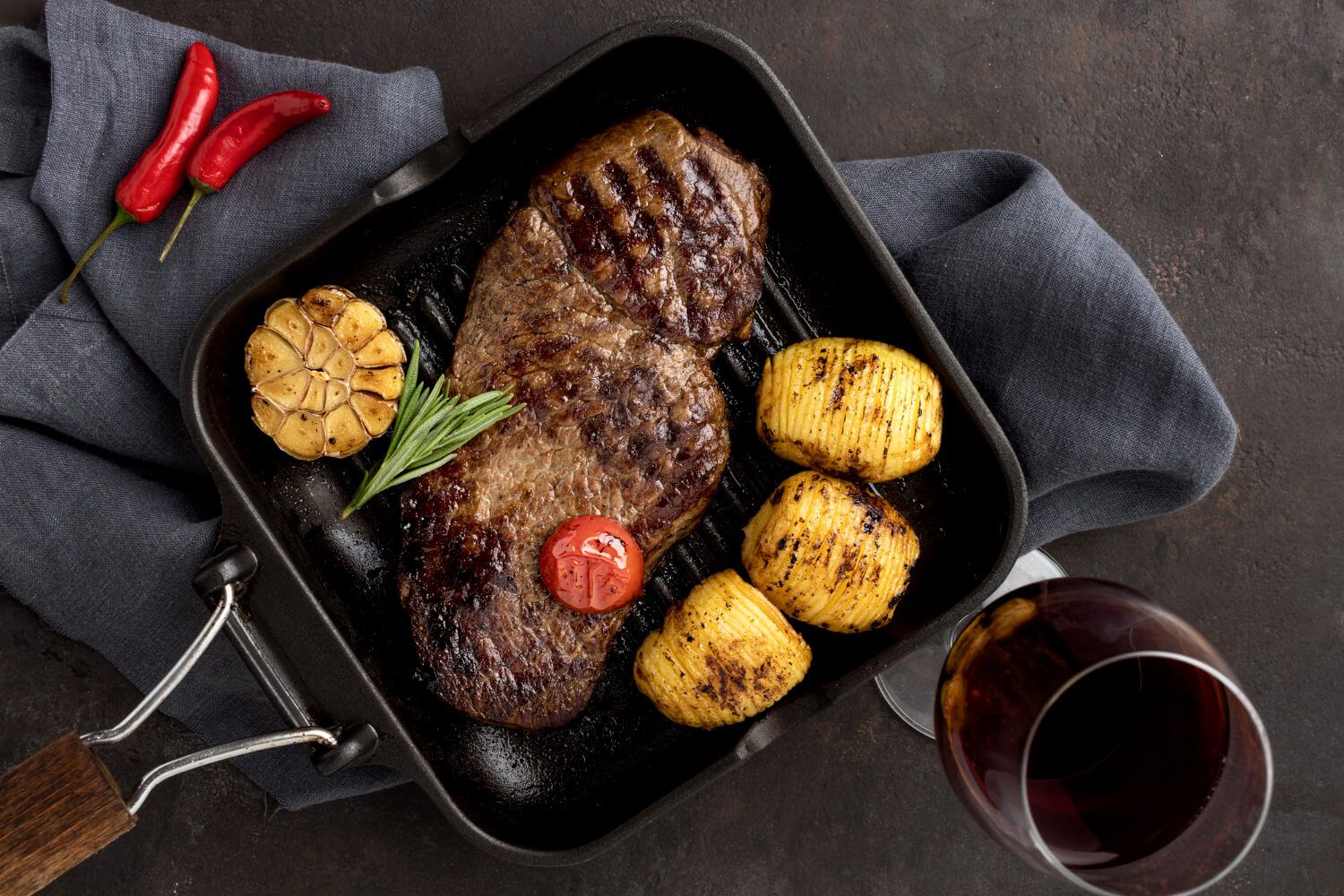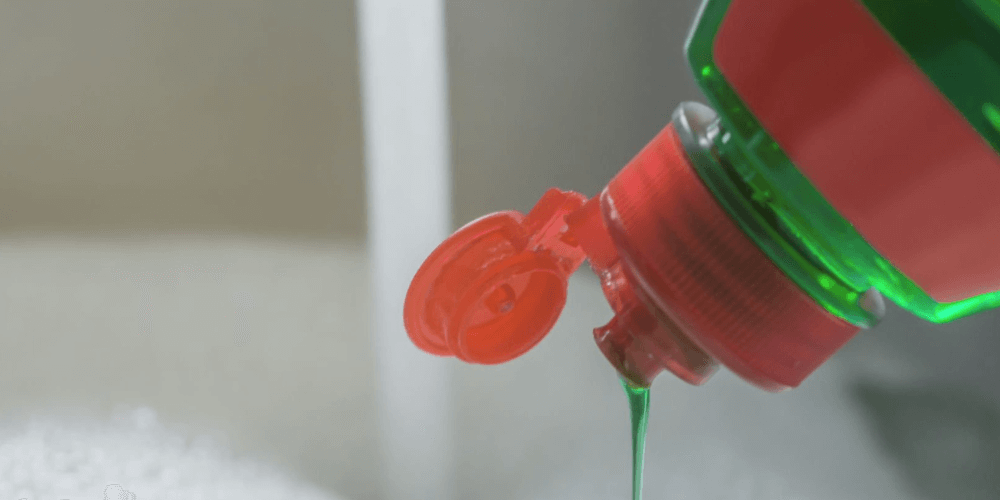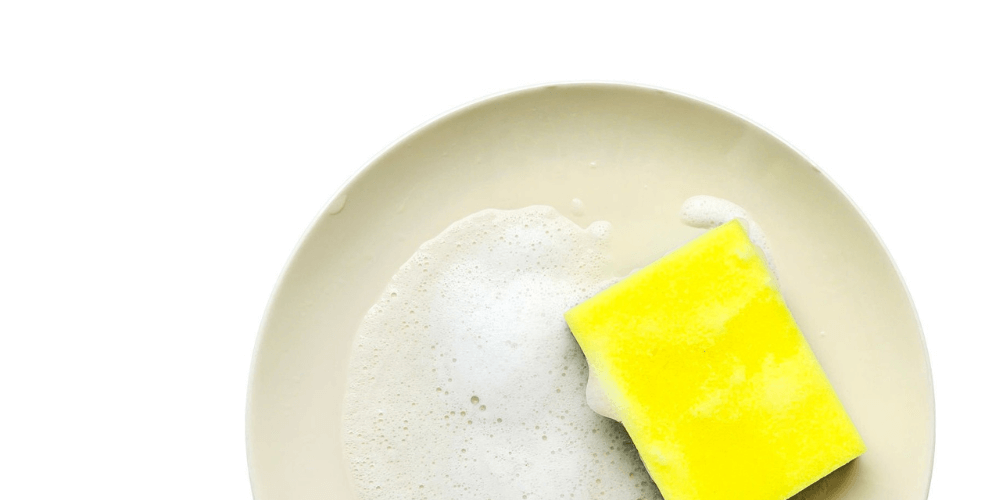Searing is a culinary technique that not only enhances flavor but also creates a tempting crust on various foods like meat, seafood, and vegetables. If you're aiming for that perfect sear, a cast iron skillet is your go-to tool. Known for its superb heat retention and even distribution, a cast iron skillet is a must-have for searing aficionados.
In this post, we will explore the art of searing and how to achieve quality results using a cast iron skillet.
Jump To:
The Science of Searing
Choosing the Right Cast Iron Skillet
Preparing Your Skillet
Searing Techniques
Beyond Meat: Searing Seafood, Poultry, and Vegetables
Searing and Deglazing
Searing Recipes
The Science Behind Searing
When it comes to searing, the Maillard reaction plays a crucial role. This chemical process kicks in when proteins and sugars are exposed to high heat, resulting in a caramelized flavor and a juicy, brown crust. A cast iron skillet is particularly effective for searing due to its heavy construction. It retains heat extremely well and distributes it evenly, ensuring that the Maillard reaction occurs consistently for a flavorful outcome.
Selecting the Ideal Cast Iron Skillet for Searing
When it comes to choosing a cast iron skillet specifically for searing, several factors come into play—size, weight, and surface texture are key considerations.
- Size Matters: A skillet with a larger cooking surface is advantageous, especially if you plan to sear multiple ingredients simultaneously.
- Weight is a Virtue: Heavier skillets are preferable as they excel in heat retention, allowing for a more consistent cooking temperature.
- Surface Texture: While a smooth surface minimizes sticking, a slightly textured one can contribute to forming a more desirable crust on your food.
Preparing Your Cast Iron Skillet for Searing
Proper preparation of your cast iron skillet is a non-negotiable step before you begin searing.
- Preheat to Perfection: Place the skillet on medium-high heat and allow it to heat up for several minutes. This ensures that the skillet reaches the optimal temperature for initiating the Maillard reaction.
- Non-Stick Benefits: Preheating not only prepares the skillet for searing but also enhances its non-stick properties. This makes it easier to achieve that coveted crust on your ingredients.
Mastering Searing Techniques with a Cast Iron Skillet
Searing is an art form, and your cast iron skillet is the canvas. Here are some tried-and-true techniques to help you master the art of searing:
- Stovetop Searing: This is the most straightforward method. Simply heat your skillet, add a dash of oil, and place your ingredient in the hot pan for a quick sear.
- Reverse Searing: Ideal for larger cuts of meat, this technique involves slow-cooking the ingredient in the oven at a low temperature before giving it a final sear on the stovetop.
- Oven Finishing: After an initial sear on the stovetop, transfer the ingredient to a preheated oven. This ensures even cooking and is particularly useful for thicker cuts.
Searing Beyond Meat: Seafood, Poultry, and Vegetables
Searing isn't just for steaks and chops. Here's how to adapt your techniques for other ingredients:
- Seafood: To achieve a crisp exterior, pat the seafood dry to eliminate excess moisture. Use high heat and minimal oil for best results.
- Poultry: For a golden, crispy skin, start with a well-seasoned piece of chicken or turkey. Make sure the skin is dry and sear it skin-side down.
- Vegetables: Uniformity is key when searing vegetables. Cut them into even sizes, preheat your skillet, add some oil, and sear until they are caramelized but still tender inside.
The Art of Deglazing After Searing
Deglazing your cast iron skillet is a culinary technique that elevates your seared dishes to new heights. Here's how to master it:
- Remove and Rest: After searing, take the ingredient out of the skillet and set it aside.
- Add Liquid and Scrape: Pour a deglazing liquid like wine, broth, or vinegar into the hot skillet. Use a wooden spoon to scrape up the flavorful browned bits from the bottom.
- Reduce and Intensify: Let the liquid simmer until it reduces in volume, concentrating the flavors. This liquid can be used as a rich base for sauces or gravies.
Inspiring Searing Recipes
Ready to put your searing and deglazing skills to the test? Here are some mouth-watering recipes that make the most of your cast iron skillet:
- Seared Ribeye with Garlic Butter: Sear a seasoned ribeye to perfection and finish it off with a garlic butter drizzle.
- Golden Scallops with Lemon-Herb Butter: Sear succulent scallops to a golden finish and complement them with a zesty lemon-herb butter.
- Chicken Breasts with Balsamic Glaze: Achieve a golden crust on boneless chicken breasts and enhance them with a tangy balsamic reduction.
- Caramelized Mixed Vegetables: Sear a medley of vegetables like bell peppers, zucchini, and mushrooms for a side dish that's as flavorful as it is colorful.
Conclusion: Elevate Your Culinary Skills with Searing
Mastering searing in a cast iron skillet is a game-changer for your culinary repertoire. From understanding the Maillard reaction to choosing the perfect skillet and employing diverse techniques, you can achieve restaurant-quality results. So, unleash your creativity and impress your loved ones with delectable seared dishes. Your cast iron skillet is more than a cooking tool; it's your partner in culinary excellence.
Frequently Asked Questions
What is the Maillard Reaction?
The Maillard reaction is a chemical process that occurs when proteins and sugars in food are exposed to high heat, resulting in a savory, caramelized flavor and appealing brown crust.
What liquids can I use for deglazing?
Wine, broth, and vinegar are popular choices for deglazing and enhancing the flavor of your dish.
Can I sear vegetables in a cast iron skillet?
Absolutely! Just ensure the vegetables are cut uniformly for even cooking and caramelization.
How do I maintain my cast iron skillet?
Regular cleaning and seasoning are essential for the long-term performance of your skillet. Avoid using harsh cleaning agents and ensure it's completely dry before storing.
Further Reading
- Great recipes start with great cookware by Lodge Cast Iron: Uncover a variety of delicious recipes to create with your cast iron cookware.
- Don't miss out on our in-depth article where we present our five top picks for the best enameled cast iron skillets.



